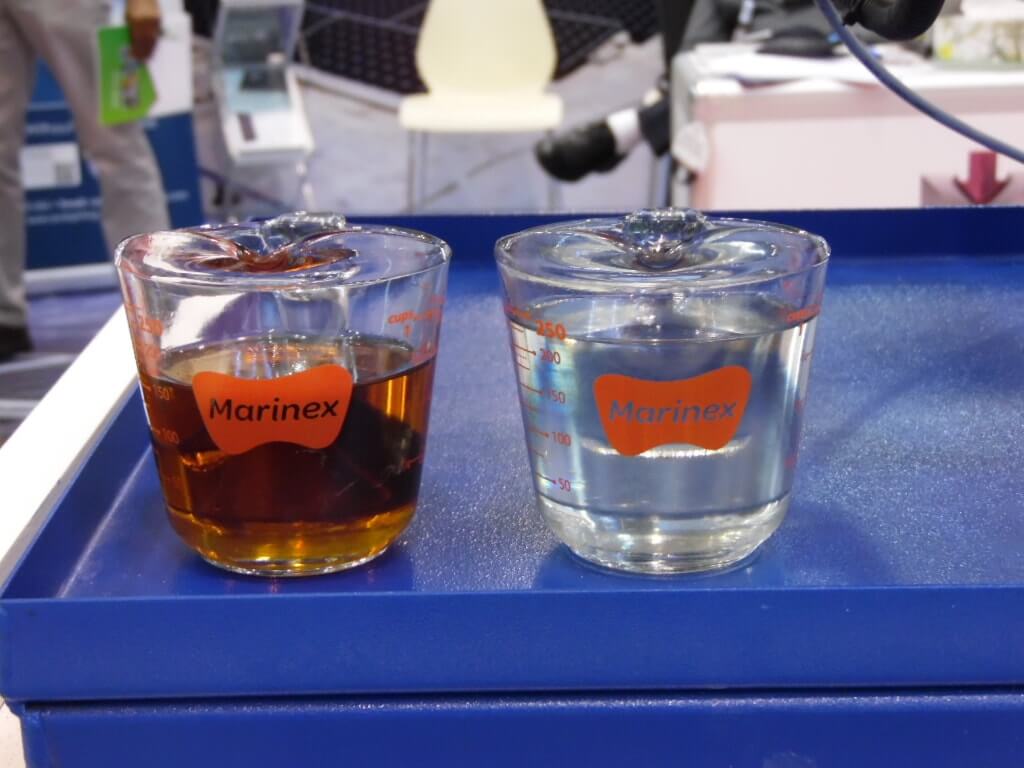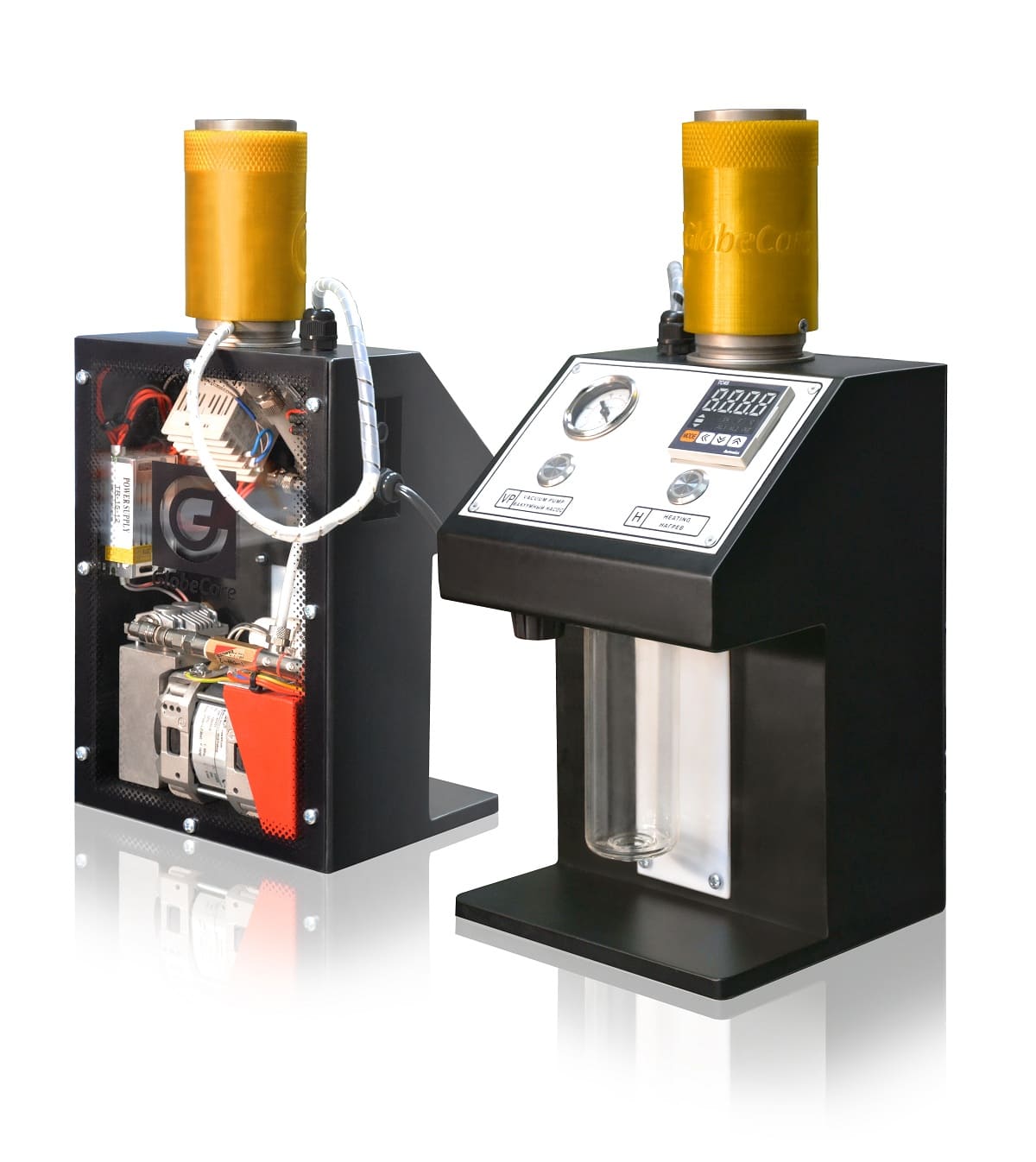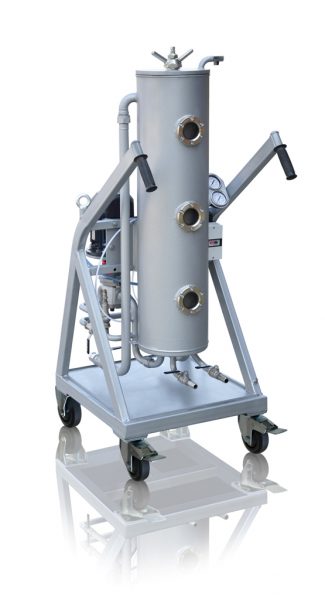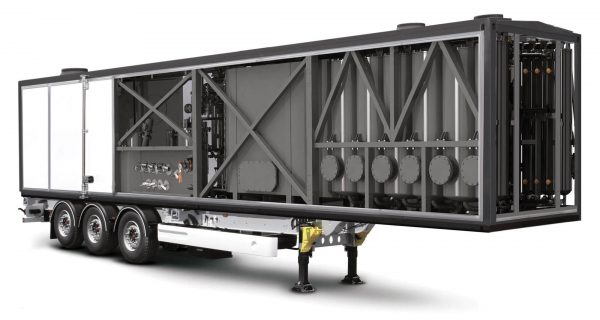Contaminant Composition
Aging of mineral oil occurs due to accumulation of contaminants with adverse effects on the operation of engines and machines.
When motor oils become contaminated, the wear of the piston engine parts and carbon deposition increases, oil conduits and filters become clogged, normal operation and temperature of friction parts and the engine are disrupted.
Abrasive wear of parts occurs due to solid particles in the layer of liquid lubricant which separates the friction parts, when the parts come in contact with the particles. The degree of wear depends on particle size, the gap between the parts and the shape, hardness and mechanical strength of the particulate matter. The highest wear is caused by mineral contaminants, such as silica oxide and various metals.
Organic substances in limited quantity, such as oxidation and thermal decomposition products, do not have such a pronounced effect on part wear as solid mineral particles. However, hydrocarbon contaminants clog pipes, oil channels and filters, and form carbon deposits and varnish on surfaces, disrupting heat dissipation, accelerating coking on the piston and rings etc.
If the oil contains water, its lubricating properties are significantly degraded, increasing wear and damaging friction parts, further contaminating oil with solid wear products.
The thickness of oil film between lubricated parts in bearings is less than one micron. Microscopic droplets of water in this film significantly decreases the efficiency of lubrication, and if they evaporate, the film is interrupted, sharply increasing wear, which may cause jamming and destruction of the bearing.
Water in the form of a stable water in oil emulsion increases wear and can damage the piston and cylinder, as well as the crankshaft of internal combustion engines.
Water in oil emulsion has lower viscosity than dehydrated oil, which sharply decreases the thickness of the lubricating film between gears. Solid particles that would normally have no effect on the surfaces start abrading them. Water breaks the lubrication film and causes dry friction, which quickly lead to damage and failures.
Similar processes occur in roller bearings, where micropitting occurs due to material fatigue. Water in oil emulsion with liquid viscosity enters these small cavities and acts as a hydraulic wedge, destroying the surfaces further. Presence of water increases corrosion of metal parts made of low grade steel and such metals as copper, lead etc, which do not interact with dehydrated oil. Air in the oil causes foaming. Uniform liquids, regardless of their viscosity, cannot form stable foam, which is stabilized by surface films with composition different from that of the dispersion medium. Foam reduces lubrication efficiency. Pressure variations cause significant change of air bubble size, leading to cavitation in the oil system.
The harmful influence of water is especially evident in transformer oil. Even small amounts of emulsified water sharply reduces the dielectric strength of the oil due to high polarity of water; it also increases corrosion due to low molecular organic acids, which are not as dangerous in dehydrated oil, but increase their corrosive influence by a factor of 20 if even trace amounts of water are present in the oil. Water also causes microbiological contamination of oil. Microorganisms do not proliferate in dehydrated oil, but their numbers increase significantly in water contaminated oil, reducing oil performance by oil decomposition, reduced viscosity, increased corrosion due to formation of aggressive substances such as acids, sulfur, ammonia, hydrogen sulfide etc.
When oil performance drops to a certain level, its further use is impossible and it must be changed. The oil is changed considering duration of use in total hours of use, total distance travelled or other parameters, which do not always indicate the actual oil quality parameters. A more economical method is to change the oil when the quality drops below a certain limiting threshold. The large number of oil quality parameters complicates evaluation of the possibility to continue using the oil. It is better to select integral indications for each oil type and application, which best reflect the quality of the oil, and to set low quality thresholds.
Operational tests to determine the influence of oil quality on reliability of machinery (including the condition of part surfaces and wear), the cost of maintenance and repairs, allow to precisely determine the most efficient oil change schedule.
The system of rejection criteria requires more research, but this approach is the most efficient in determining oil change schedule.
When the lower quality thresholds are reached, the oil must be changed. Collection of restoration of such oil can extend its lifetime.
Restoring Oil with Purification
Oil is restored by physical, chemical and combined processes to remove aging products from the oil.
Physical methods include factors such as gravity, centrifugal, electrical and magnetic forces as well as filtration.
Using gravity for oil purification is the simplest physical method, when solid particles and water are pulled to the bottom by gravity, if the impurities are large enough and their density is significantly higher than that of the oil. The simplest method is static settling, but it is very time consuming; the process can be accelerated by heating the oil to decrease its viscosity.
Dynamic settling units equipped with devices to accelerate the process (horizontal or diagonal barriers, several bottoms, conical plates etc) complicate the design and servicing of such units, therefore the use is limited and are rarely used for purification of used oil.
Settling efficiency is significantly reduced if the oil contains detergents or other substances which hinder aggregation of impurities and coagulation of water droplets.
Settling takes a long time and is often unable to ensure the required degree of purification, and as such is used mostly as a pre-treatment stage.
Process duration can be reduced by applying centrifugal forces. There are two ways to generate such forces: create a rotating stream of oil in a stationary cyclone device or processing the oil in a rotating centrifuge.
Cyclones can be forward of reversed flow. There are also different ways to supply the oil and the device to create the rotating flow: axial (with vanes in the shape of a screw) and peripheral (with tangential or spiral inlets). The unit can be of various shapes: cylindrical, conical or conical-cylindrical.
Hydrocyclones are compact, have to rotating parts, but the efficiency of purification drops with the increasing diameter of the device, therefore several smaller units are usually combined into a larger system, more complicated than one single unit, with inlet and outlet collectors.
Counterflow hydrocyclones are more common. They have higher hydraulic resistance due to the change of oil flow direction by 180°. Straightening devices reduces the resistance, but complicates the design and may reduce efficiency by changing the hydrodynamic structure of the flow. Straight flow cyclones, where the flow keeps its initial direction, are more promising. However, their efficiency is somewhat lower than that of counterflow units, since some impurities are carried along by the flowing product.
Cyclone efficiency depends on the mode of operation, that is, the velocity of the liquid at its inlet. For oil dehydration, the optimal oil velocity is 3…6 m/sec, while increasing this velocity above 6.65 m/sec the unit operates as an emulsifier, creating a water in oil emulsion. To Efficient removal of particulate matter, the inlet velocity must be significantly higher. Two stages can be combined: the first unit separates water, while the second removes particles. Several cyclines can be installed sequentially (for instance, one unit separates dehydrated oil and water; the second unit removes water from the mix, the third one removes particles from the oil coming from the first and second units). This, however, complicates the design of purification equipment.
Centrifuges generate centrifugal forces in a rotating drum driven by electrical, mechanical or hydraulic drive or by a jet nozzle, using the energy of the oil flow. Centrifuge achieves better results than cyclones, create less hydraulic resistance and ensure constant throughput, but are more complicated and required skilled servicing.
The designs of oil purification centrifuges are various in terms of operation principle and the design of some components. There are tubular bowl centrifuges (with hollow cylindrical rotor), where the oil is processed in a thick layer and chamber centrifuges (with cylindrical, conical, spiral or radial insets which separate the drum into chambers, where oil is processed in thin layers. Oil can be supplied to the rotor axially, peripherally or across the entire cross section of the rotor, and its motion inside the centrifuge can be parallel or perpendicular to the axis of the rotor, at an angle or along a spiral etc. Centrifuges are also divided into high speed and low speed (under 10000 rpm). Chamber centrifuges are more efficient for particle removal, whereas tubular bowl and centrifugal separators with conical plates are used for water removal, because other designs do not allow to remove the separated water from the drum.
Tubular centrifuge design does not facilitate sufficient oil purification, while centrifuges with conical plates perform only one of the required functions: removal of solid particles or water from the oil. ALKAP system has been developed to avoid the need to use two centrifuges; this system has automatic devices to remove particulate matter and water from the unit. This processes are managed by a microprocessor based on the amount of water sensed in the product.
Purification and dehydration in an electrical field have not seen much use so far, although the electrokinetic properties of oil (a dielectric) indicate that this method is possible, while experience shows that in certain conditions electrical purification of oil is quite efficient.
Electrical purification with uniform or non-uniform electric field are used. In the former case, the oil passes between two differently charged electrodes, and impurities settle on the electrodes. The particles of impurities change their charge and oscillate between the electrodes; some particles are carried away by the flow of oil. Covering the electrodes with a porous material reduces this effect, but also decreases the efficiency of purification and complicates removal of contaminants from the system. It is better to supply the oil into the system perpendicular to the electrodes and removal of impurities to a collection container.
In a non-uniform electric field, impurity particles are first ionized, and then settle on the electrode with the opposite charge.
Oil is dehydrated in DC or AC electric field. DC field is used for this purpose in practice. Electrical dehydration is based on bipolar coalescence or dielectrophoresis.
In the former case, dipole momentum appears in microdroplets of water, causing attraction and coagulation. The attractive force increases with field strength up to a certain limit, above which the field breaks the droplets. Bipolar coalescence is used for high concentrations of water in the oil.
In the case of dielectrophoresis, the water droplets move to one of the electrodes under the influence of non-uniform electric field, become charged and are attracted by the electrode of the opposite charge. The repeated motion of the droplets between the electrodes causes collision, coalescence and settling into a container. This method is suitable for used oil with small amounts of water.
The advantages of purification and dehydration of oil in electrical purification units are small size of the equipment, absence of moving parts, constant throughput and pressure drop and possible process automation.
Much of the impurities in used oil are ferromagnetic, due to wear of parts and components, as well as impurities originating from metal working equipment. To remove them from the oil, magnetic purification systems are used.
Magnetic purification system capture ferromagnetic particles about 0.4 micron in size, which are difficult to capture with other purification systems, and are also the most active catalysts of oil oxidation. Magnetic purification is not sufficiently theoretically developed, but experience shows that this method can be successfully applied. Permanent magnets with stronger field than electromagnets, are used for this purpose. The direction of oil flow can be arranged along the force lines of the field with laminar flow for maximum efficiency of the purification process.
A limitation of purification in a magnetic field is the narrow application range due to the nature of the influence, although it can capture diamagnetic and paramagnetic impurities aggregated with the microscopic steel or iron particles or sedimented on the metal particles, captured by the field and structured along the force lines of the field.
Oil can be purified by elastic oscillation fields, created by vibration purifiers, in which solid particles coagulate and are easily removed by settling or filtration. In some cases, elastic oscillations efficiently break molecules of resins and other compounds, created by oil aging. This phenomenon is referred to as ultrasonic destruction. An ultrasonic field with power of less than 1 W/cm2 can intensify oil dehydration by coalescing microdroplets of water.
Filtration through porous barriers made of filter media is the most common physical method of filtration. The media differs in terms of filtration rating, mechanical properties, chemical composition, production process etc. Filtration fineness of coarse filter media is 70… 10 micron, of medium fine filtration — 20…60 micron, of fine filtration — 1…20 micron, and less than 0.1 micron of superfine filtration. This division is formal, as filtration fineness for a certain oil depends on the conditions.
Physically, filtering materials can be flexible or rigid, which allows to characterize their operation principle, which defines the design of the filter element.
Filtering materials also differ in physical and chemical properties of the material and production technology.
Flexible materials are made of fabric, fibers (fabric or mesh), bound (paper, cardboard, felt) and free (cotton, stuffing) fibers; formed of bound grains of a powder (porous metal casting); with calibrated openings in metal sheets made by mechanical, chemical, optical, nuclear or other methods. Fibers and grains of identical or different compositions can be used.
Rigid filter elements can be hard, made of various powder grains by baking, pressing or other processing methods, and soft, made of unconnected powder grains, used in bed and precoat filters.
Slot filters are also used for oil purification (plate, band, wire or channel filters). Detailed information on filter material properties and the design of filter elements are given in publication .
Filter design selection depends on the requirements to purification degree and process parameters (throughput, operating pressure etc). Waste oil is usually filtered through batch filters,k which are simple in design and can be operated in a wide range of operating pressures. Their limitation is the need to stop operation to change or clean the filter element.
Filtration is also used for oil dehydration. In porous barriers with water absorption properties, water is absorbed by the filter materials until the latter is saturated. Porous barriers of water-repellent materials allow the oil to pass, but stop the suspended water droplets. Such barriers have a limited operation cycle. The former become saturated with water and lose the ability to trap it, the surface of the latter becomes clogged by water droplets and lose oil throughput capacity. The most efficient barrier are special materials (most often fibers) with water adsorptive and water repellent properties, which gradually increase the size of water droplets until they precipitate under gravity. Such barriers can theoretically have unlimited lifetime, but in practice their properties are degraded with time due to contamination with solid particles and resin.
The process of separating free water from oil products by porous membranes is researched in publication .
Dehydration of used mineral oils by coagulating barriers has not yet gained wide popularity due to the sharp drop of water separation efficiency with increasing density and viscosity of the processed substance and presence of surfactants, although the simple design and operation of such devices make them quite promising if the above limitations are addressed.
Porous barriers are also used to remove organic contaminants from the oil. Such phenomena as ultrafiltration and reverse osmosis, known as membrane processes and based on the ability of semi-transparent barriers to selectively pass some molecules while trapping others, are used. Such materials as polymer films, porous glass, metal foil, ion exchange materials etc. Some membranes are also made of cellulose nitride and acetate, polyamide, PVC, carbon-fluorine compounds etc. Structure is reinforced by super-fine wires, glass and synthetic fibers, synthetic fabrics etc. The process of oil purification with membranes is economical, since it occurs at ambient temperature and only requires power to create pressure in the system. The membrane purification system is simple and consists only of a device to create pressure and the separation unit with a porous membrane.
The biggest limitation of membrane purification is the need to create high pressure in the system, requiring more structural strength of the equipment. Membrane efficiency decreases in the process.
Oil purification can be performed with combined methods, using several fields or barriers. The combined effects of centrifugal and electrical forces are used in electrified centrifuges. The electric field is created by an external power source or by triboelectric effect due to the friction of dielectric rotor against special bushings. Such field is non-uniform and purification efficiency is increased.
For more efficient removal of ferromagnetic particles, centrifugal and magnetic forces can be combined by installing permanent magnets into the centrifuge rotor. The combined effects of fields with filtration are achieved in filtering centrifuges, hydrodynamic, magnetic and vibration filters.
In a hydrodynamic filter, the action of hydrodynamic (inertial) force of oil flow is combined with filtration, ensuring self-cleaning of the barrier during operation. The forces of inertia acting on solid particles appear when the liquid is flowing along the barrier, or if the barrier is forced to move relative to the flow. Such motion can be rotating or reciprocating, powered by a constant energy source.
Hydrodynamic filters with fixed filtering element, where inertial forces are generated by the flow of the oil, are simple, with minimal maintenance requirements, although some of the oil is discarded with the impurities; the higher the degree of purification, the higher the loss of oil. Moving the filter surface relative the oil flow can eliminate product loss, but this complicates the design of the purified and requires a driving mechanism (mechanical, electromagnetic, pneumatic etc). The efficiency of hydrodynamic filters can be improved by equipping them with an electric sedimentation device, which creates an electric field in the settling portion of the filter housing.
Hydrodynamic filters, which combine simple design and continuous operation, are quite promising.
Centrifugal force and filtration are combined in filtering centrifuges, in which the rotor wall is made of porous material. The difference of pressure at the filter is created by the centrifugal force, while impurities are captured by the filter material.
Magnetic filters combine filter elements which capture non-magnetic impurities, and magnets, which remove ferromagnetic particles. Filter elements protect magnetic surfaces from oil oxidation products. Such units are used for used oil which contains a lot of metal particles.
Adsorption purification is based on the ability of some substances (adsorbents) to capture impurities from the oil on the surface of granules and inside capillaries in the granules. There are natural (bleaching clay, bauxite, naturally occurring zeolite) and artificial adsorbents (silica gel, aluminum oxide, alumina silicates and synthetic zeolite).
Alumina silicate are varied in chemical composition and structure. Adsorption properties of these materials depend mostly on their mineral structure and grow with increased porosity. Adsorbents are widely used due to low cost and wide availability.
Silica gel is a partially dehydrated silicic acid and is produced industrially in various pore and granule size. Large granules (3-7mm) are used for waste oil restoration.
Activated alumina is used as an adsorbent in the form of 3 – 6 mm thick and 10-25 mm long rods, as well as in its granulated form. Activated alumina is a byproduct of aluminum production and is rather inexpensive. This makes it an efficient adsorbent despite the somewhat lower adsorption rate compared to some of the other adsorbents. Waste oil is also purified with crumbs of alumina, a byproduct of alumina silicate production for crude oil cracking catalysis.
Adsorption purification can be performed by contact (mixing the oil with ground adsorbent), percolation (the oil passes through a layer of sorbent) and counter-current (oil and adsorbent move in the opposite direction).
Contact purification is widely used due to simplicity of equipment and capability to apply such common sorbent as bleaching clay. After capturing all impurities, the adsorbent is removed from the mixture by filtration, which complicates the process, the efficiency of which depends on the temperature and contact duration. At higher temperatures, the efficiency of such purification decreases due to Brownian motion of oil molecules, while low temperature also reduces efficiency due to high oil viscosity. Normally, process temperature is maintained within 150…200°С range for motor oil and 70…75°С for transformer oil. Contact duration with intensive mixing takes no more than 30 minutes. The drawback of this method is the need to dispose of large amount of sorbent, an environmental hazard.
Percolation method requires less adsorbent. Quality of the process is influenced by the degree of contact of the oil with the sorbent media, inversely proportional media granule size and oil viscosity due to low temperature, so the process temperature is selected for the lowest possible oil viscosity. Process quality drops with sorbent saturation; the material must be changed or reactivated from time to time. Silica gel is commonly used in percolation purification processes.
The most promising method is adsorption in a moving adsorbent layer. The process is continuous and requires no change, reactivation or filtration of sorbent. The idea is to supply both components of the process into the system at the same time: thinned oil comes in from the bottom, finely dispersed adsorbent comes in from the top and passes downwards, capturing impurities. The sorbent the goes for reactivation and returns into the system, i.e. circulates in the system continuously. The temperature of the process is kept at about 40°С, since oil viscosity is low due to 1:1 thinning with solvents, such as gasoline. Microspherical granules (0.2 – 0.5mm) of alumina silicate, natural bleaching clays or other synthetic or natural sorbents. Purification of oil in a moving sorbent layer significantly improves the yield of purified oil and its quality compared to other adsorption purification methods. However, wide application of this process is hindered by the complexity of associated equipment.
As adsorbents capture impurities from the oil, they become saturated and lose their efficiency; the media must subsequently be reactivated or replaced (in case of low cost sorbent media).
Sometimes, sorbents are thermally or chemically activated before use.


 СММ-0,001U Laboratory Oil ...
СММ-0,001U Laboratory Oil ... CMM-1,0CF Unit for ...
CMM-1,0CF Unit for ... CMM-12R Oil Regeneration ...
CMM-12R Oil Regeneration ...